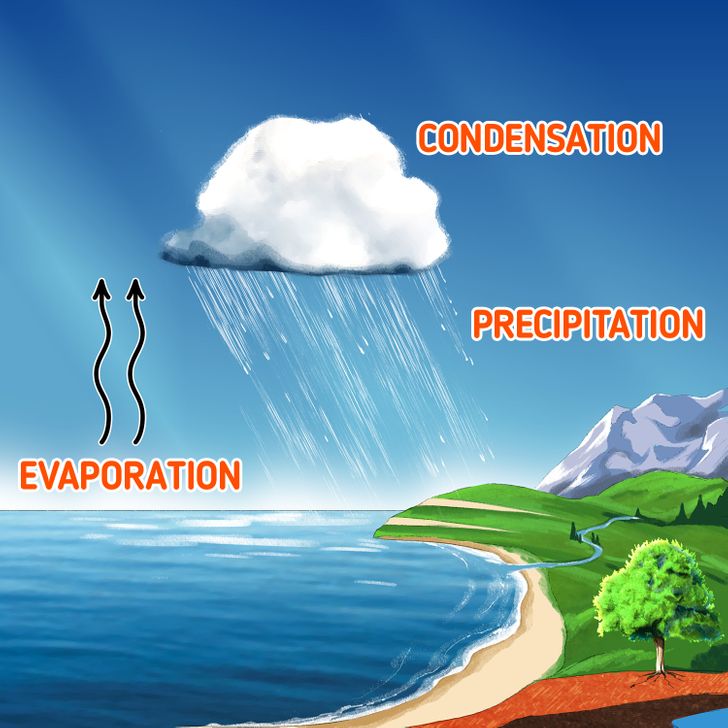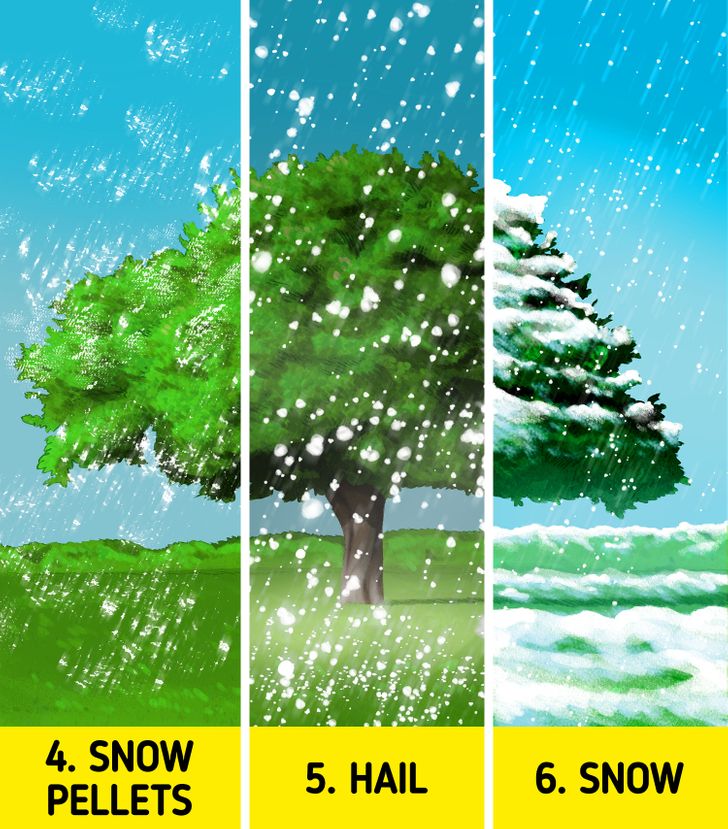Types of precipitation
As it’s an integral part of the water cycle, people rely on precipitation to cover various needs, such as drinking, bathing, or crop irrigation. However, this phenomenon may occur in different forms and amounts worldwide, making it difficult to tell the main differences between them.
5-Minute Crafts has prepared this short guide to explain what precipitation is and which type you’re looking at.
What is precipitation?

It’s any type of water, either liquid or frozen, that is formed in the atmosphere and drops onto the Earth’s surface. Precipitation is one of the 3 main parts of the water cycle, along with evaporation and condensation.
Precipitation begins to develop in the clouds as water vapor condenses. When these bigger droplets are heavy enough, they start falling to the ground.
If a cloud has a low temperature, these water drops can freeze, producing ice crystals, which will drop as rain, hail, or snow. This depends on what the temperature is within the clouds and at the surface.
The most common types of precipitation:

1. Drizzle: is composed of droplets that are less than 0.5 mm. It looks like it’s floating in the air and falls to the ground evenly.
2. Rain: consists of separated droplets, which can be 0.5 mm or bigger. They’re generally thought to have the shape of a tear, but they’re actually spherical.
3. Sleet: also known as ice pellets, is a kind of precipitation composed of transparent ice grains. These small frozen pellets usually bounce after hitting the ground.

4. Snow pellets: also called small hail, consist of spherical or conical grains of ice. They’re less than 5 mm in diameter.
5. Hail: small uneven balls of ice that fall separately. They are related to thunderstorms, and an individual piece can be more than 5 mm in diameter.
6. Snow: it’s composed of ice crystals that fall together, building clusters of snowflakes. They can have different patterns, which depend on weather conditions like temperature and humidity.